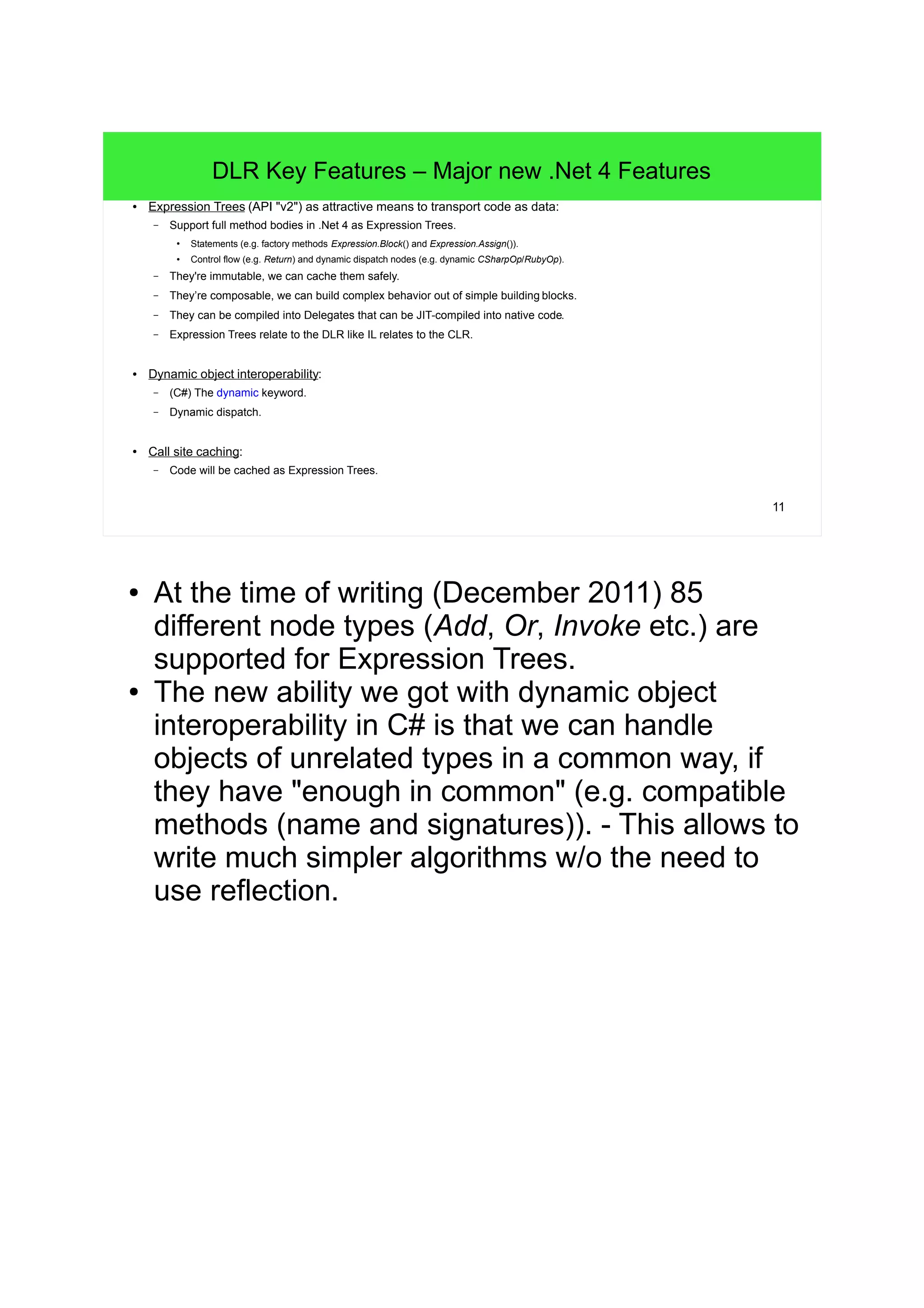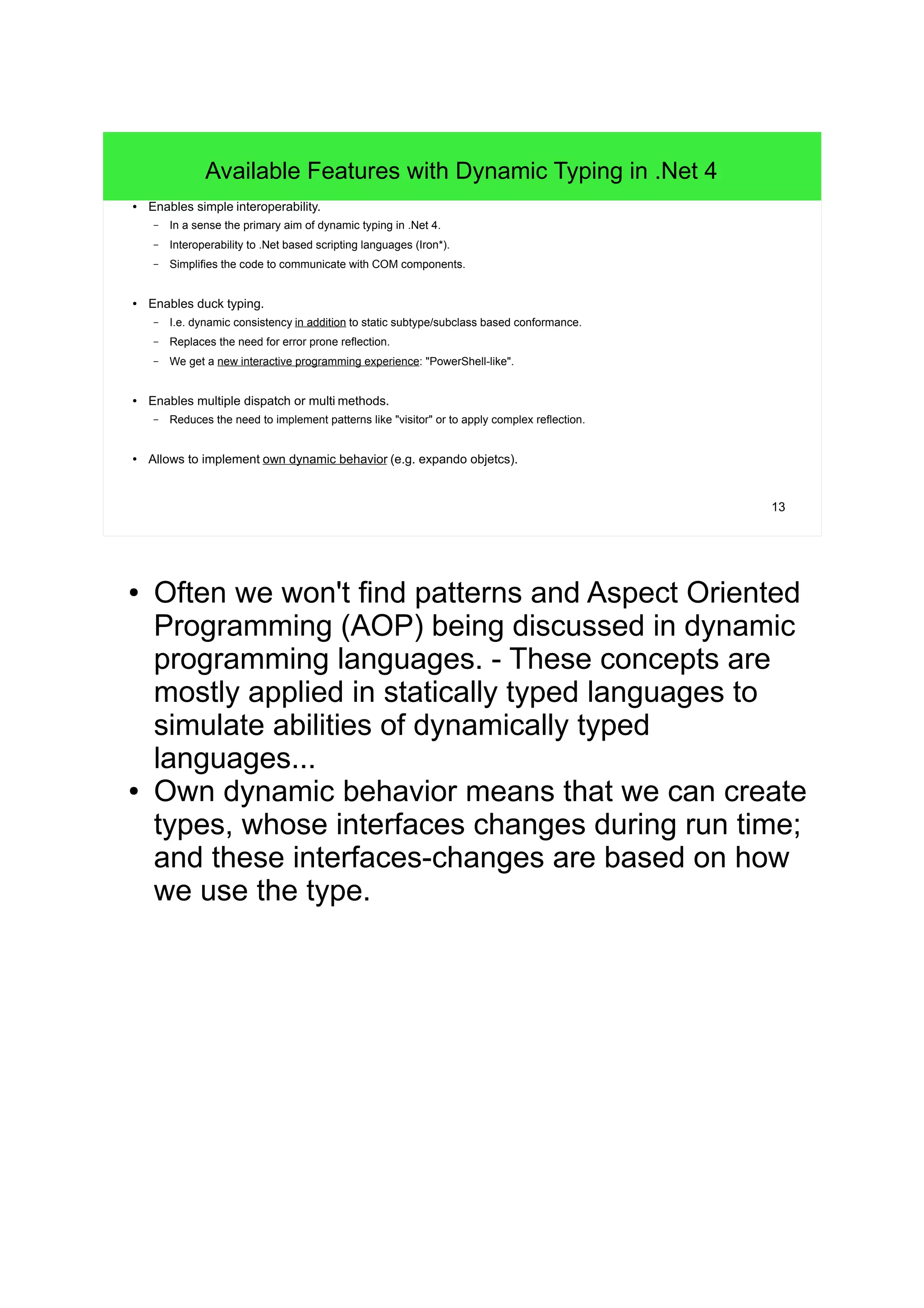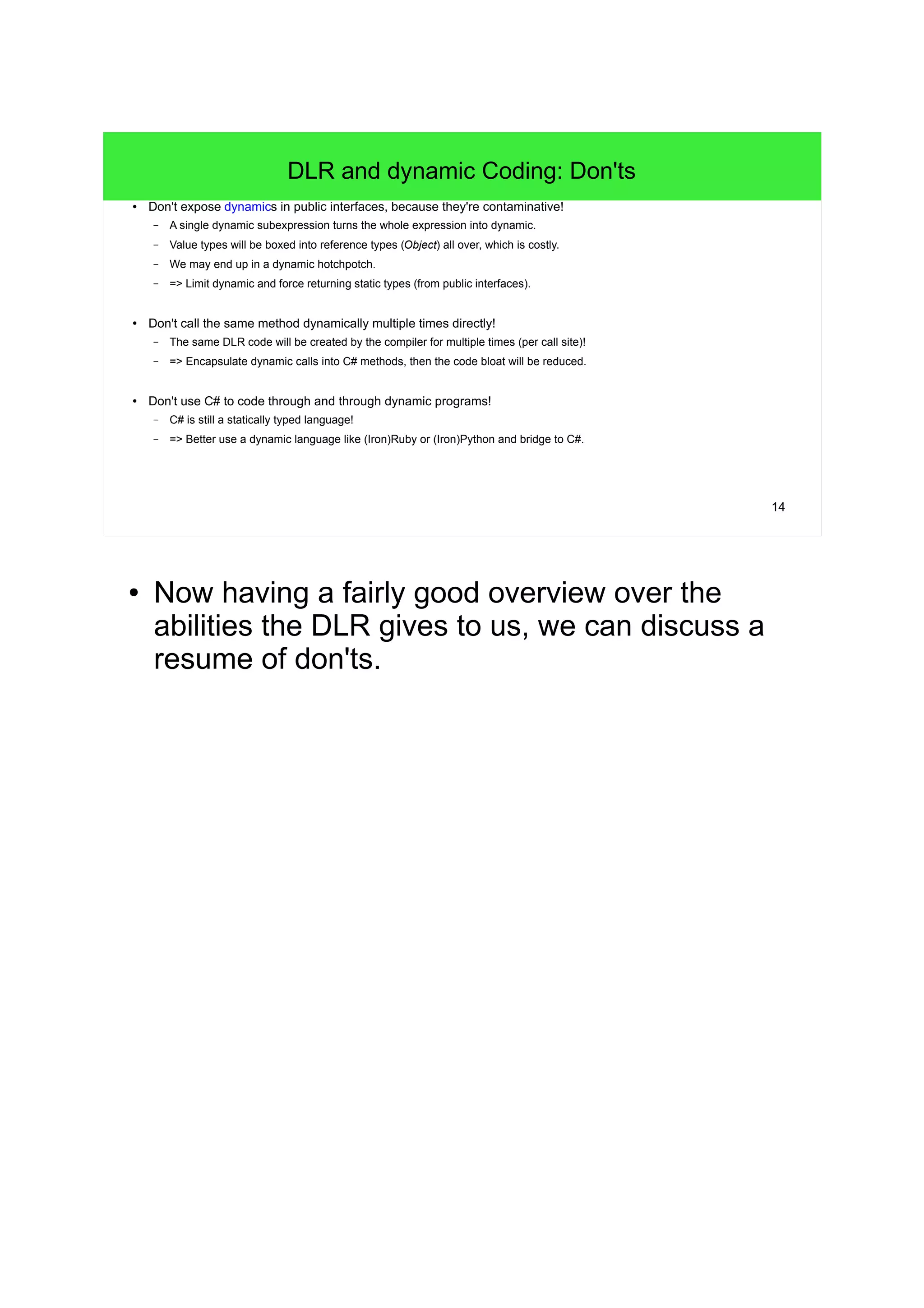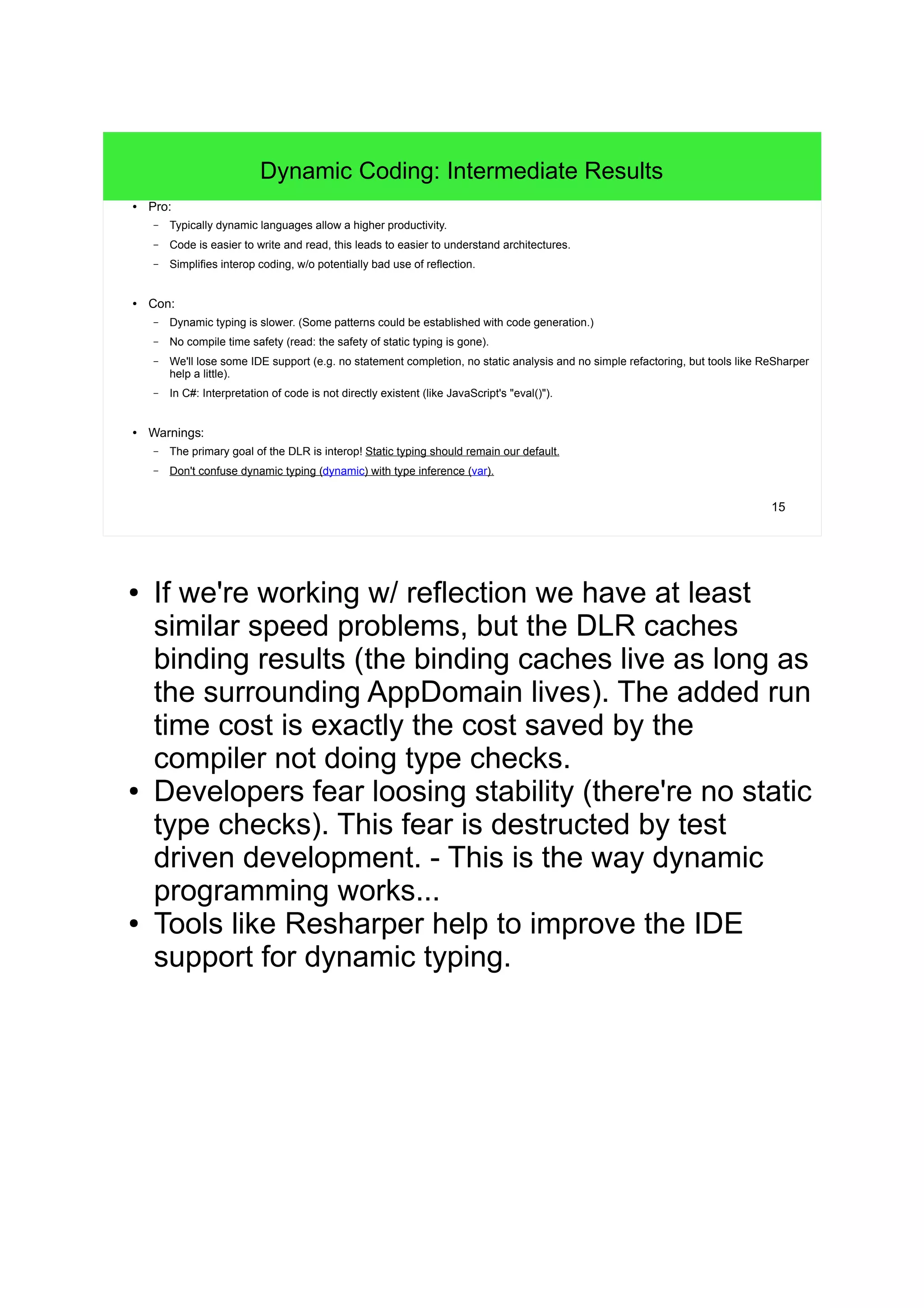This document discusses the Dynamic Language Runtime (DLR) and dynamic coding features in C# 4. It provides an overview of the DLR and how it allows interoperability between statically and dynamically typed languages on the .NET framework. The DLR transforms dynamic operations in C# into calls to the DLR at compile time and handles dynamic dispatch at runtime. It uses expression trees to represent operations in a language-agnostic way and caches binding results for improved performance.


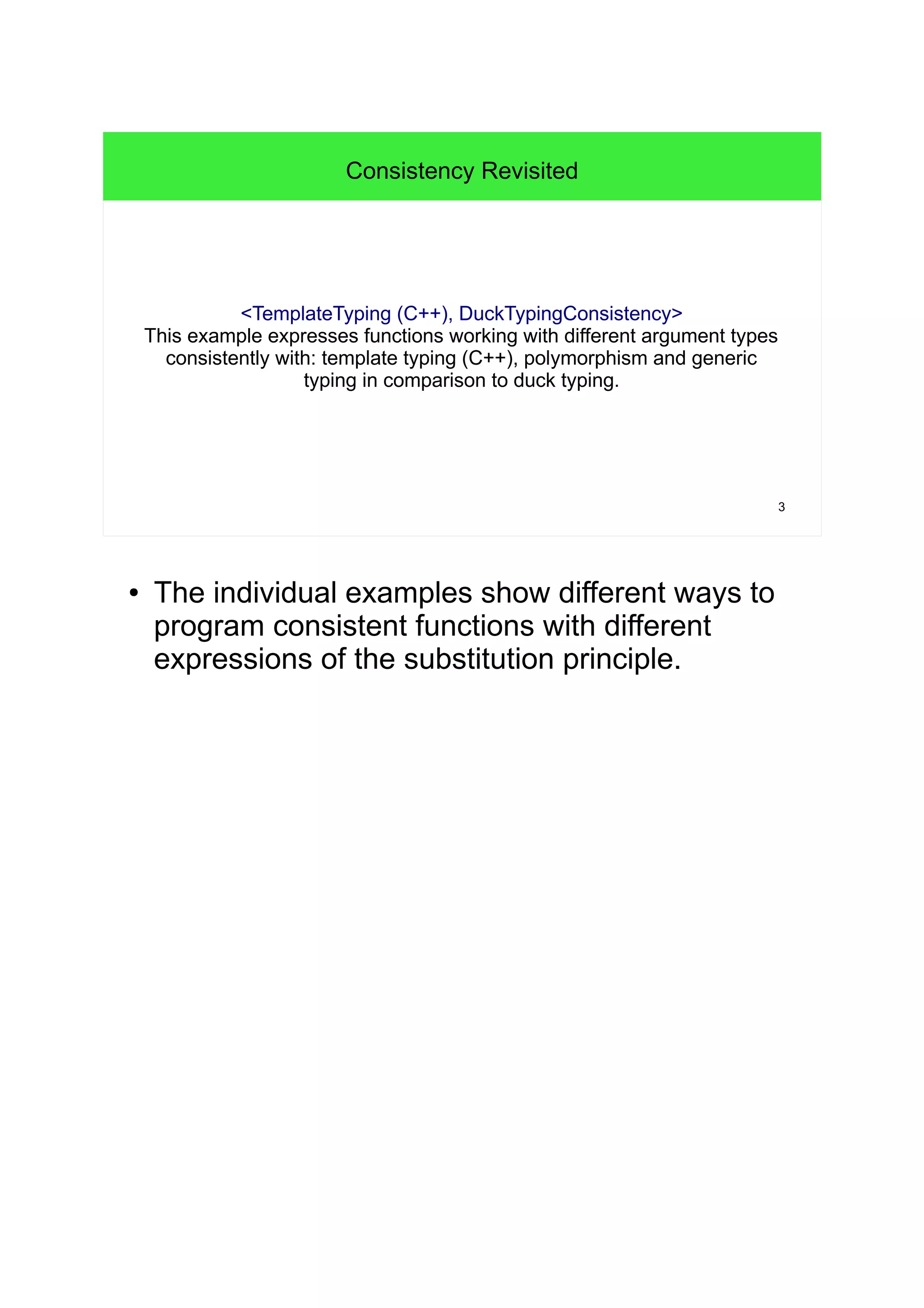
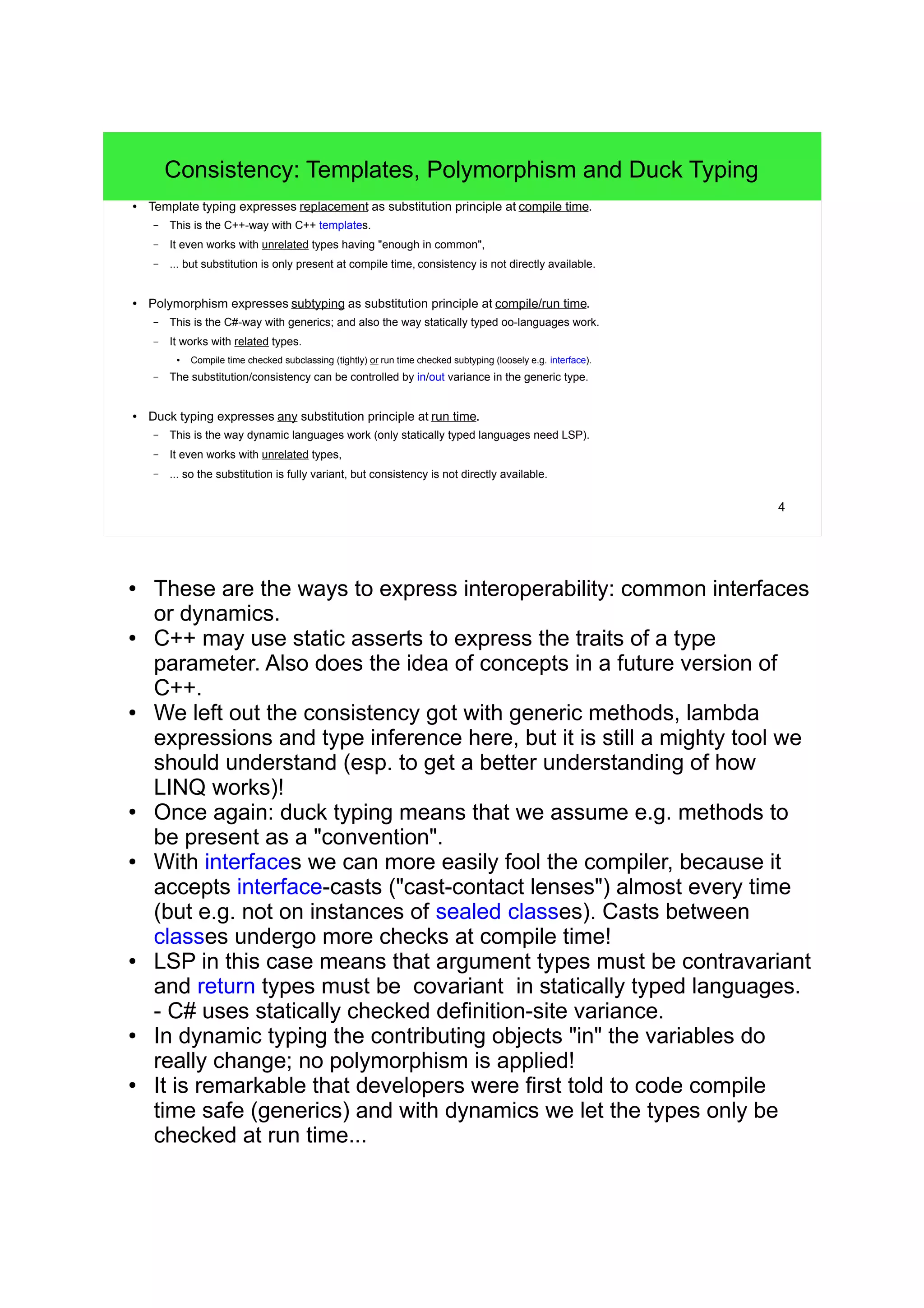
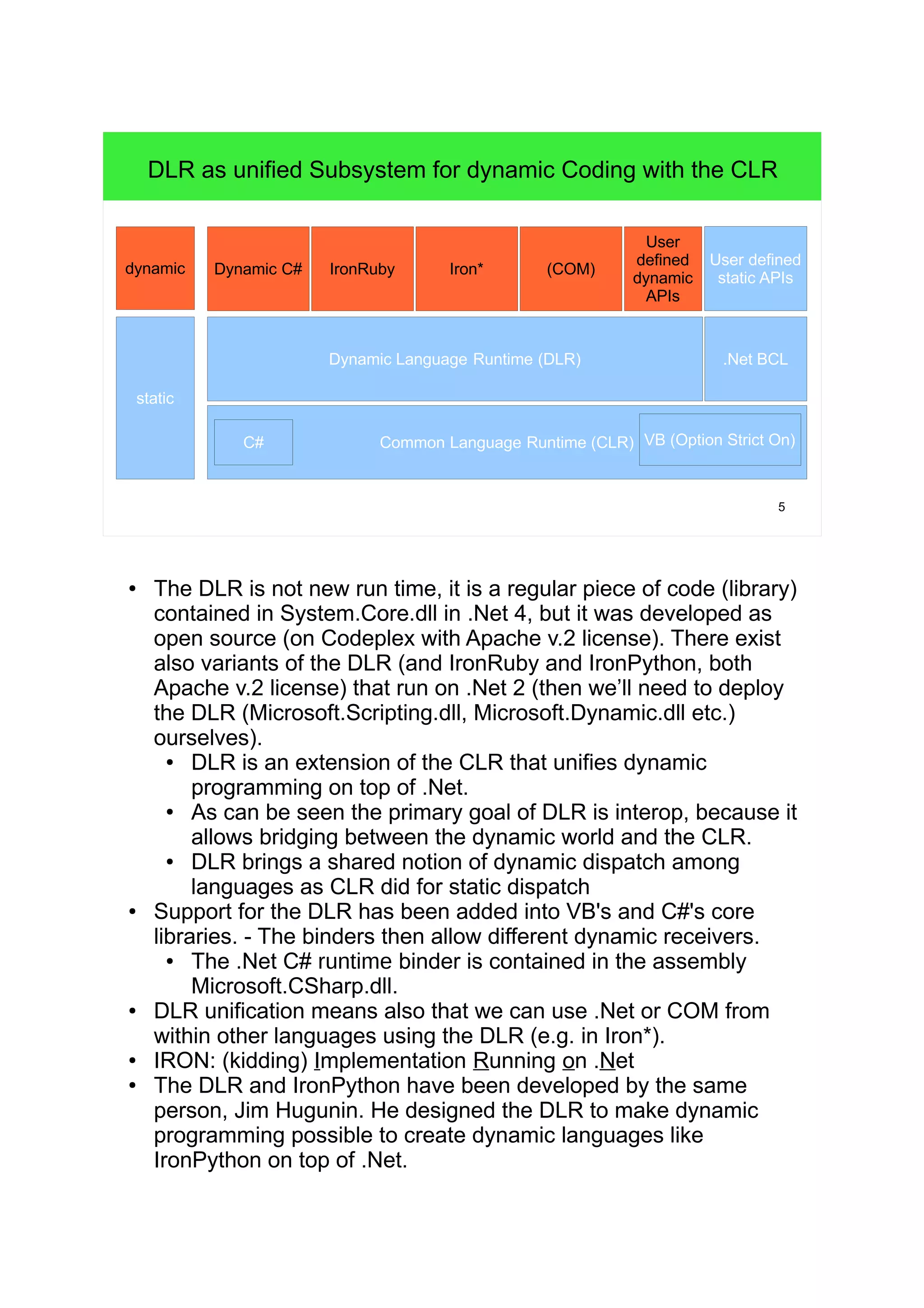
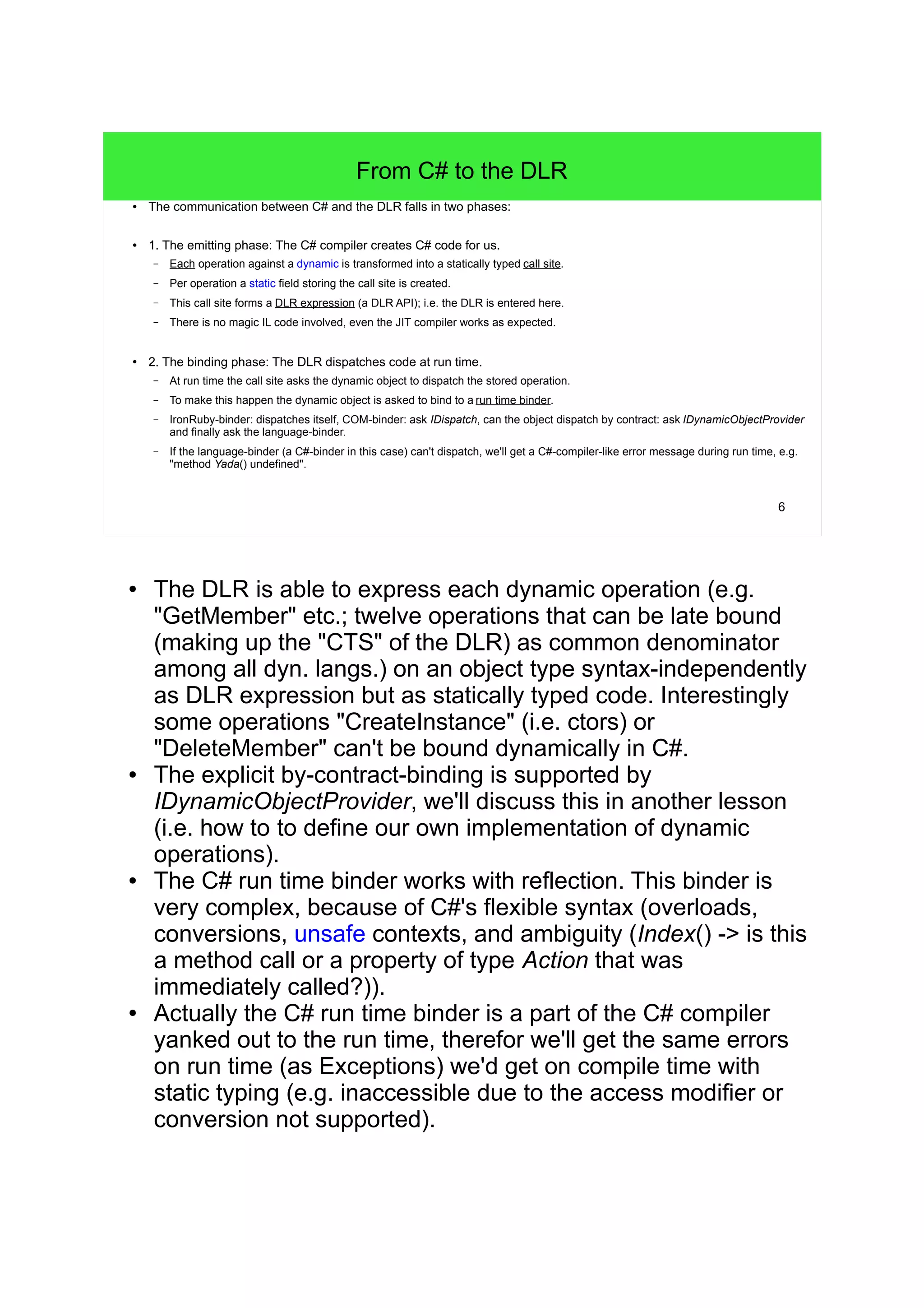
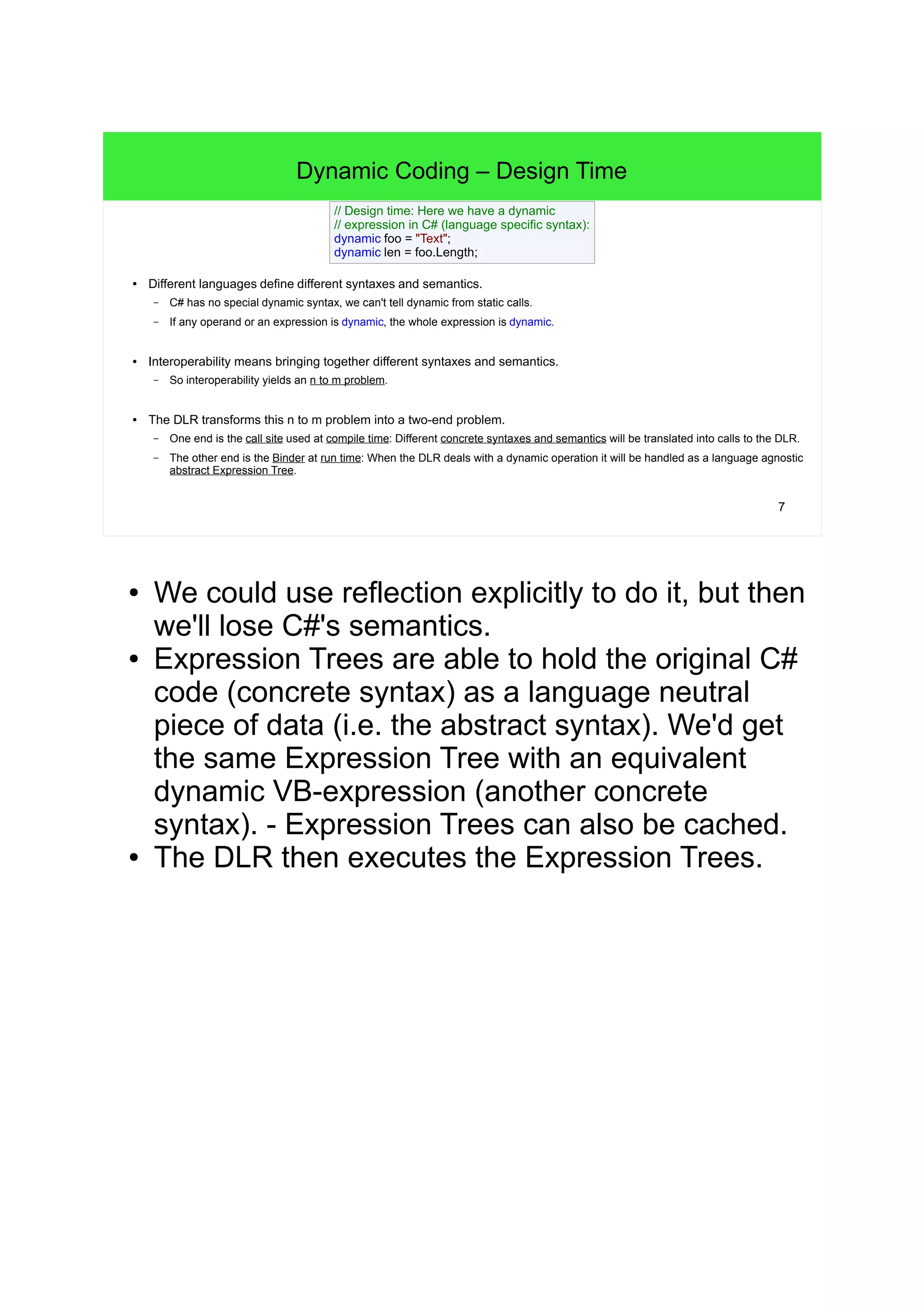
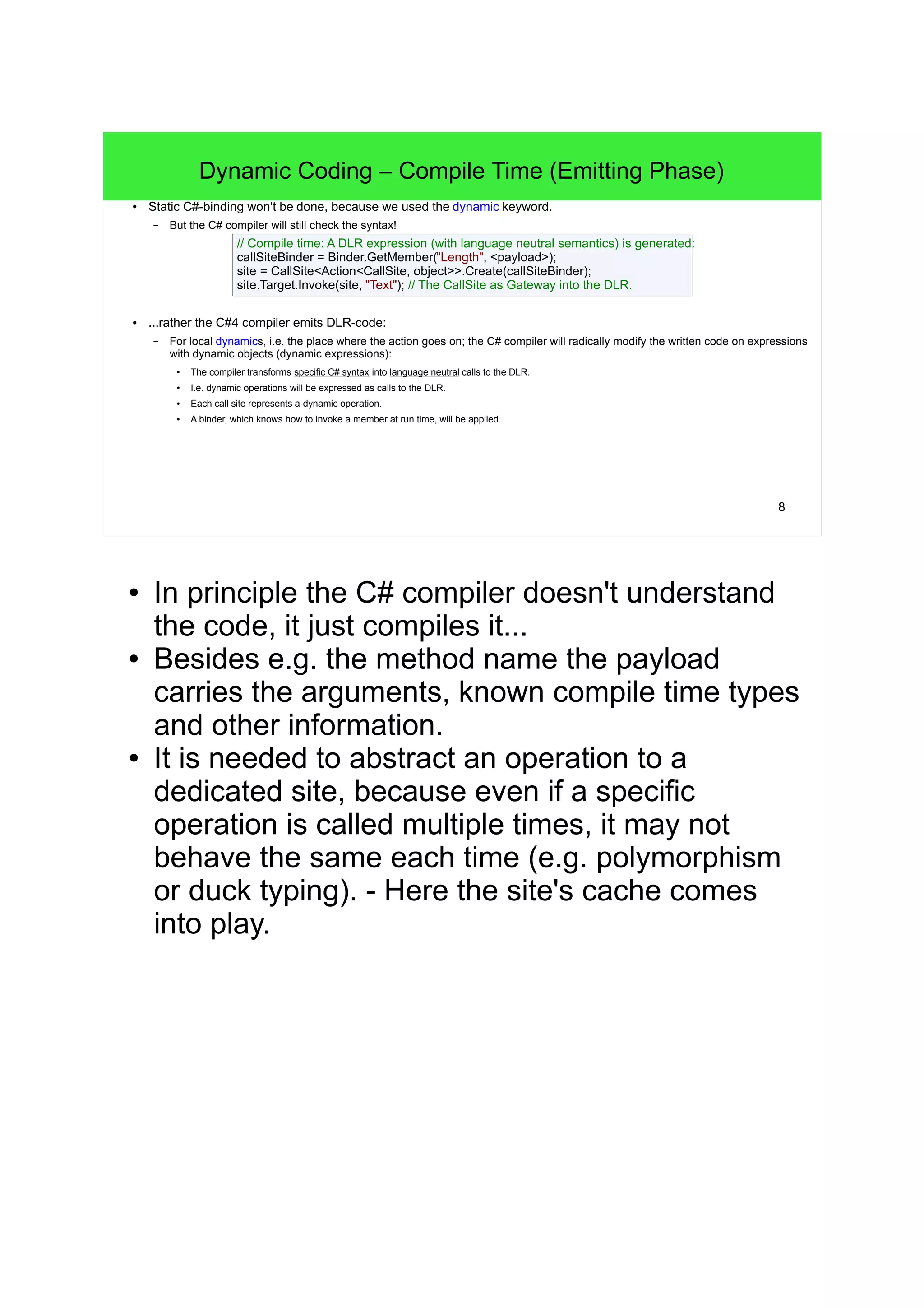
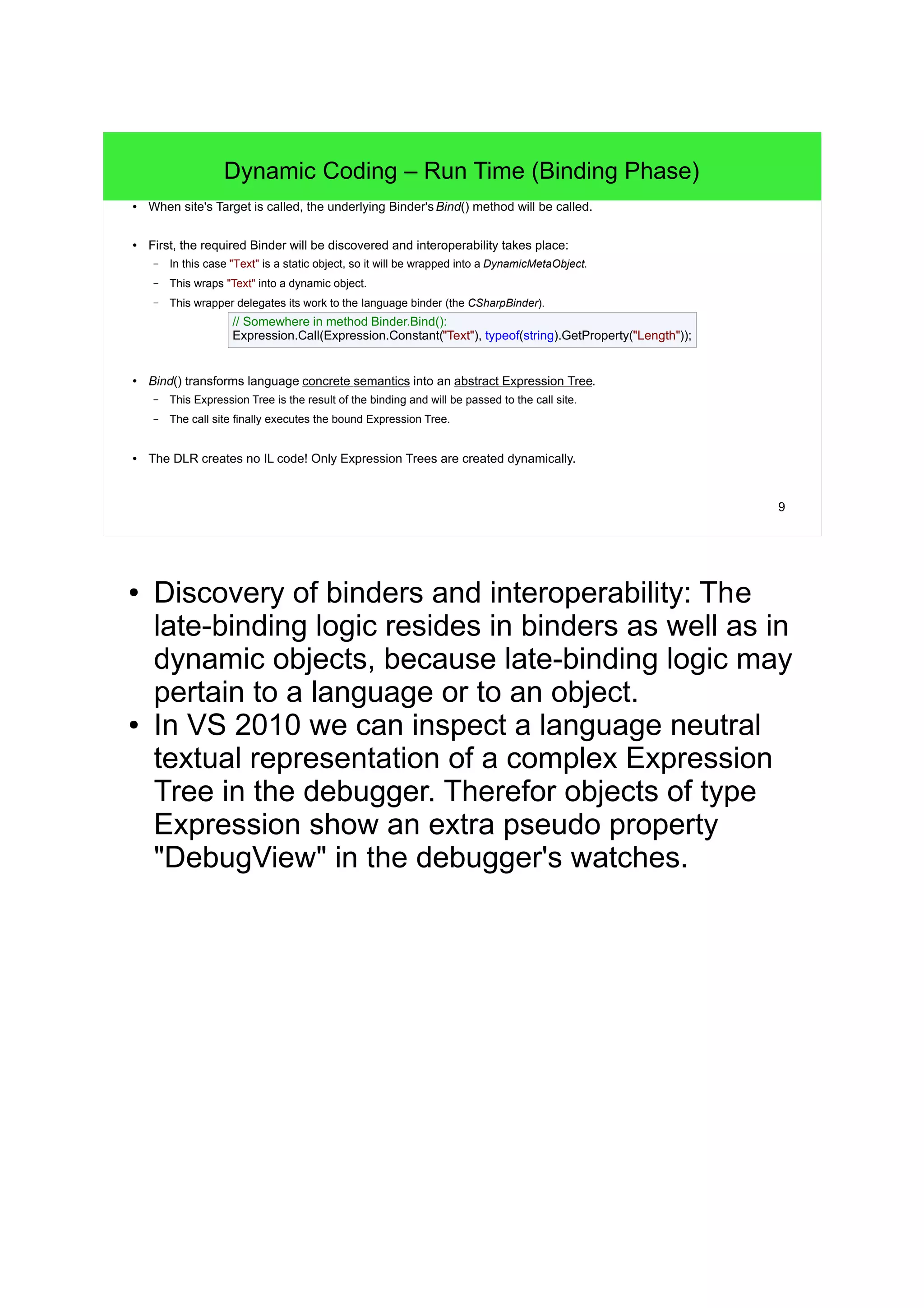
![10
Run Time Caching of Binding Results
● Dynamic binding can be expensive, therefor the DLR caches binding results.
– There are three cache levels: in the Target Delegate, in the call site and in the Binder.
● E.g. if we have an array of objects to be dynamically dispatched:
foreach (dynamic item in new object[] { "Text", new int[] { 1, 2, 3 }, "Yada", new int[] { 42 } })
{
dynamic len = item.Length;
– The DLR can cache and reuse the bindings to string.Length and int[].Length.
Expression.IfThenElse(Expression.TypeIs(param0, typeof(string)), // rule
// rule1
Expression.Call(param0, typeof(string).GetProperty("Length")), // binding result
updateBindingCache); // default: update cache
result1
Expression.IfThenElse(Expression.TypeIs(param0, typeof(int[])), // rule2
Expression.Call(param0, typeof(int[]).GetProperty("Length")), // binding result2
updateBindingCache)); // default: update cache
}
The first iteration will cache a binding to string.Length w/ the TAhftee rn tehxet uitpedr.a wteo na' tb fiinnddi nag c taoc ihnet[d]. Lbeinndgitnhg i sto c ianct[h].eLde nwg/ tthh:e d reufal eruu "lltpesa "tropa amurpa0dm ias0t ei ni sct [sa]"tc.rhineg.".
● This is only pseudo code, it doesn't run. - Much
more context is required (e.g. site and binder).
● Expression Trees can not be modified, rather it is
required to create new ones by recycling existing
subtrees.
● The DLR does not create code during run time,
but creates Expression Trees that can be cached.
I.e. we won't see such "written" Expression Tree
code somewhere.
● This an example of polymorphic inline caching
(also used in JavaScript and Smalltalk).](https://image.slidesharecdn.com/newcsharp4featurespartiv-140907034936-phpapp02/75/New-c-sharp4_features_part_iv-10-2048.jpg)
